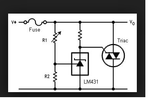panneerrajan
Member level 1
- Joined
- Jul 9, 2013
- Messages
- 38
- Helped
- 0
- Reputation
- 0
- Reaction score
- 0
- Trophy points
- 6
- Location
- Trivandrum
- Activity points
- 350
Hi,
My device input voltage is 12 to 24VDC, for reverse voltage protection purpose I have provided series Diode in positive input point and SMBJ30CA TVS diode at across the input point.
Also I want to protect my device from 230VAC input.
Glass fuse provision available in input point
Please suggest suitable protection circuit with low cost.
Thank you,
Rajan
My device input voltage is 12 to 24VDC, for reverse voltage protection purpose I have provided series Diode in positive input point and SMBJ30CA TVS diode at across the input point.
Also I want to protect my device from 230VAC input.
Glass fuse provision available in input point
Please suggest suitable protection circuit with low cost.
Thank you,
Rajan
